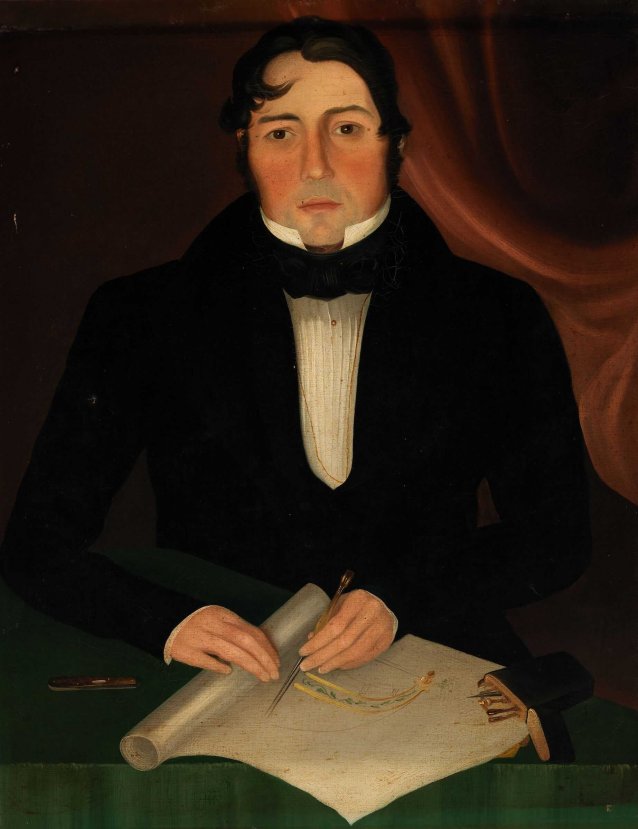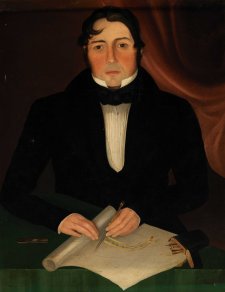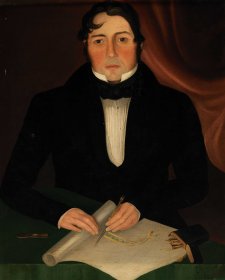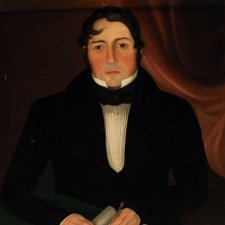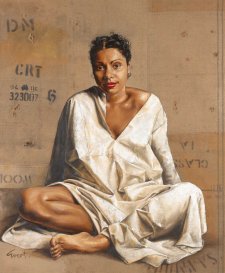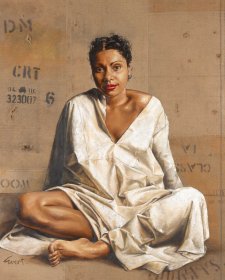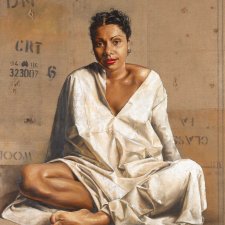John Eason (1799–1858), shipwright, arrived in Hobart with his wife, Allison, around 1838, and established a shipbuilding operation at North West Bay in the early 1840s. Here, Eason constructed whaling ships and vessels ‘well adapted for the Coasting, Port Phillip or Sydney trade’, among them the Isabella (1840), Scotia (1841), Allison (1844) and Mary Ann (1849). Eason also appears to have spent some time at Macquarie Harbour in 1846 and 1847, during the period in which the former penal settlement on the remote west coast of the island was reopened as a shipyard. Tasmanian newspapers throughout the 1840s carry advertisements for several vessels of Eason’s design and construction, each considered to have been ‘constructed of the best materials, expressly for the colonial trade’. Eason died at his home on Watchorn Street, Hobart on 2 May 1858, his death notice describing him as ‘for many years a shipbuilder of this city’.
William Buelow Gould (1803–1853) is believed to have worked as a draftsman for the London printmaker, Rudolph Ackermann, and as a porcelain painter for Spode’s works in Staffordshire before being transported to Van Diemen’s Land for theft in 1827. Although skilled convicts were useful to the authorities, Gould soon began downgrading his worth through recidivism and a month after landing in Hobart had recorded the first of numerous misdemeanours. In June 1829, having attempted to pass a fake banknote, he was sentenced to three years at Macquarie Harbour, but was among those marooned when some of the convicts on the ship transporting him there (the Cyprus) mutinied and escaped on the stolen vessel. Gould was rewarded for not absconding with assignment to Colonial Surgeon, James Scott, for whom Gould produced one of the ‘most splendid collections of inimitable drawings not only of the plants but most of the birds of this island’. Despite this, Gould continued to offend and was banished to Macquarie Harbour again in 1832. Assigned to medical officer, William de Little, Gould collected and drew botanical and natural history specimens, creating the watercolours now contained in his exquisite ‘Sketchbook of fishes’. Gould completed his sentence at Port Arthur and received his certificate of freedom in 1835. Back in Hobart from early 1836, Gould set about earning a living for himself and his growing family through his painting. Though prolific, Gould’s practice was marred by poverty, alcoholism and further run-ins with the law. He died in Hobart in 1853, having produced landscapes and portraits along with the natural history illustrations and still life paintings for which he is now best known.
Purchased with funds provided by the Liangis family 2013
The National Portrait Gallery respects the artistic and intellectual property rights of others. Works of art from the collection are reproduced as per the
Australian Copyright Act 1968 (Cth). The use of images of works from the collection may be restricted under the Act. Requests for a reproduction of a work of art can be made through a
Reproduction request. For further information please contact
NPG Copyright.
